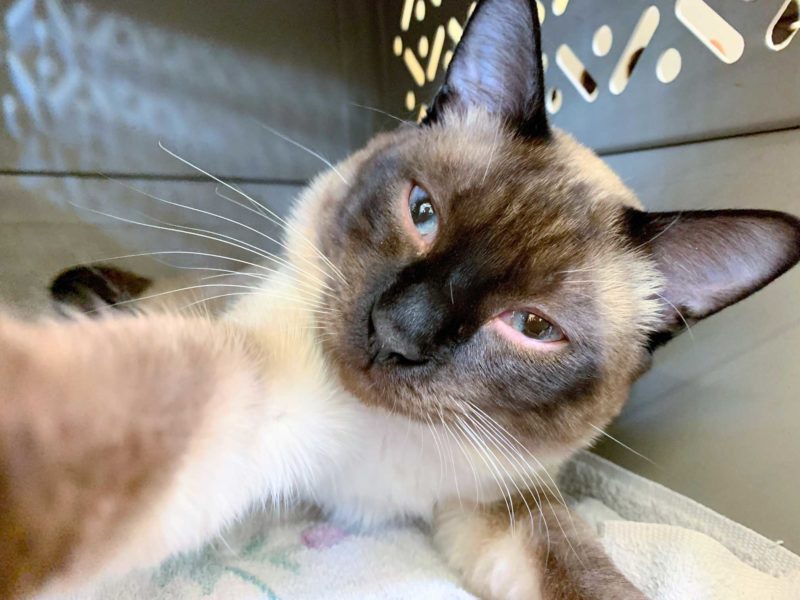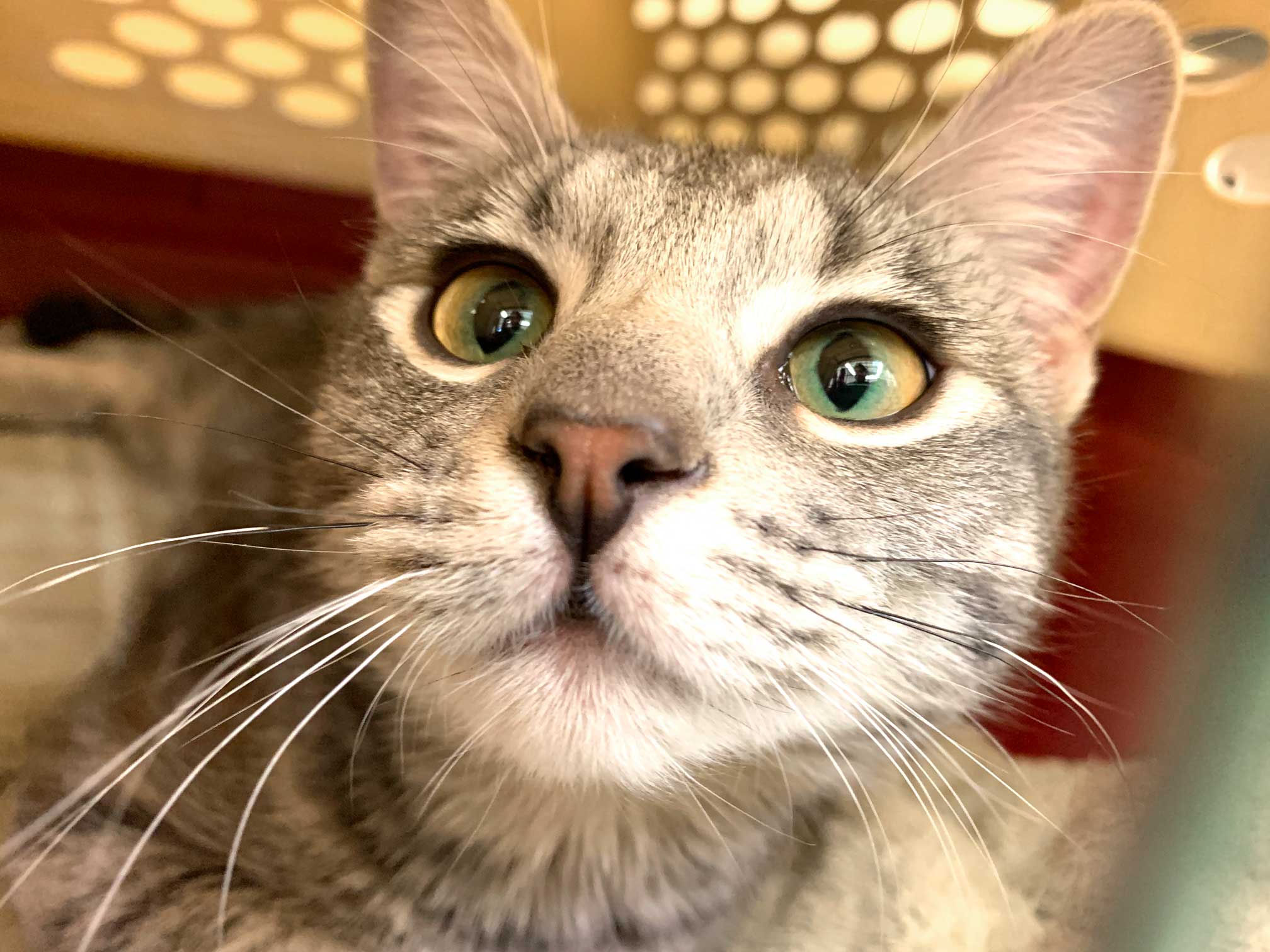Let’s start at the beginning: why do people declaw cats? There are three reasons:
1) The cat in question is damaging belongings and furniture with their claws,
2) The owner in question is immunocompromised, and has been advised that the best way to reduce the risk of (in their case) a dangerous situation is to get rid of the claws altogether, and
3) They’re moving and their new landlord will only accept declawed cats.
We talk to people all the time about declawing, and the truth is that there are a lot of folks who’ve just never learned what exactly declawing does, and the lasting effects it can have.
The dirty details
See, declawing isn’t just like trimming nails. It’s a much more involved surgery than that; technically, it’s an amputation of part of the toe. When you frame it that way, it sounds much less appealing, doesn’t it? But it’s the lingering effects that can really be the problem.

See, cats are digitigrade, which means they walk on their toes; their entire musculature is in tune with the way they walk. It’s what makes them capable of such big, graceful leaps. Declawing changes all that, and in fact can lead to back problems because of how it changes the way they walk and how they carry themselves.
Declawing also removes a cat’s primary means of defense. Even if they’re an indoor only cat, if the unthinkable were to happen and they escaped or otherwise found themselves displaced, they’d be unable to defend themselves, and that’s not a situation we ever want to see a cat in.
Cat scratching behavior is perfectly natural; in addition to it being a means of marking something with their scent (they have scent glands in their paw pads!), it allows them to sharpen their claws so that if they need them, they’re ready. It’s also a way for them to relieve stress. It’s easy to redirect scratching behaviors; in fact, we wrote a whole article about it.
Even though there are different types of declaw surgery, none of them are without the risk of bone fragments being left behind, which makes walking painful. Often declawed cats end up with behavioral problems like urinating outside the litterbox; this is because of the pain they’re in. Cats are notoriously good at hiding their pain. In the wild, showing weakness can put a cat in danger among competition for food or mates; this behavior carries over into their much calmer domestic life, so just because a cat isn’t showing very obvious signs of pain doesn’t mean there isn’t something going on.

The legal issue
So why is declawing legal? That’s a great question. It’s illegal in a lot of places: Brazil, most of Canada, Israel, Finland, Sweden, Estonia, the Netherlands, Germany, Switzerland, Austria and the UK all have outright bans. In the United States, New York State is the only state with a full ban. Denver, along with several Californian cities, have bans on it. Bans are currently being considered in Michigan and New Jersey as well. But the United States has been slow to adopt the humane position that there’s no real reason to allow this practice to continue. We still have landlords who refuse to rent to people whose cats have claws in this country, which seems especially inhumane to require an extra expense for their tenants that will likely result in even further expense down the road when behavioral or back problems start.
So it’s been up to animal organizations to pick up the slack. VCA hospitals just announced they would no longer do declawing in their clinics in the US (they’d decided to do so in their Canadian hospitals last year), joining Banfield and BluePearl. In addition, the AVMA, the AAHA, the AAFP, and the ASPCA all have position statements against declawing.
Clearly, on the professional level, there’s a consensus: animal welfare has evolved, and we don’t need to do this to cats anymore. So why is it taking so long for us as a nation to reach the same conclusion as so many other places? Is it simply because we Americans are so legislation-averse that we prefer to let cities and states decide on their own, rather than the decision be made from the top-down?
Or is it that we haven’t done a good enough job getting the word out? Position statements are great, but your average pet owner isn’t looking through an organization’s website to find out what they think about declawing; they just know someone whose cat was declawed, and are considering it an option. Or they grew up with declawed cats and never learned any other way. Or they simply don’t understand the damage they’re doing to their furry friend. That’s when it comes down to education. And while organizations are pushing from the top, we’re pushing from the bottom, one client, one cat-owner at a time. We hope to get there soon.



Needing advice on what to do with my cat. We love her so much that getting rid of her is absolutely not an option. Ever since we got her at 8 weeks old, she has been tearing up literally our whole rental house with her claws cause we can rarely get her to use any kind of scratching post. Also, when in heat, she had started acting out towards my daughter (3yrs old) and myself; dhe arches her back, hissing, & tries to lunge at us, but she never does this to my husband. We now have rxtra expenses to pay before we can move out. Also, most landlords in our area that actually accept pets, requires cats to be declawed. I can’t have her tearing up anymore of our stuff, our rental, or potentially hurting my daughter or me. We plan to have her spayed & are leaning towards getting her declawed at this point. We have tried MANY different tips/tricks but she is still tearing everything up & not using her scratching posts. Any advice would be greatly appreciated; thank you in advance!
Hi, Kristen. Getting her fixed should definitely be a priority, because we don’t need those aggressive behaviors that are coming along with her being in heat. That’s something that should subside once she isn’t feeling that need to procreate and looking at others as competition.
As far as the scratching behavior, you’re on the right track with getting her a scratching post. I don’t know what kind of scratchers you’ve used, but sometimes cats prefer horizontal or vertical. Pay attention to the objects that your cat destroys and how she goes after them. Is she scratching horizontal or vertical surfaces? That’ll help you at least get that part of the equation down. And some cats prefer a specific surface. For example, many cats really enjoy a nice sisal rope post. Carpet can cause problems because (1) it sheds and gets everywhere, and (2) cats’ claws can get stuck on the carpeting, which can be frustrating.
The next part is to get them to use it. What we’re wanting to do is create a situation where it’s as convenient as possible for her to use whatever scratcher. We had cat behavior expert Rachel Geller on an episode of our podcast and she talked some about some good ways to redirect scratching behavior. But let me see if I can get you some of the basics. One of the things she talked about was putting the scratcher near something that they scratch regularly, so it’s right there. To make it attractive there’s always the trick of using catnip, and if they go for it, reward them with a treat. There’s also a synthetic pheromone called Feliscratch that you can put on a scratching post. It mimics the scent of another cat having scratched the post, which makes them want to put their scent on it by scratching. You can also get sticky tape to put on, say, a couch, to discourage them from scratching the things you don’t want.
There’s also little nail caps you can put on their claws that will physically prevent them from doing damage. Not every cat will tolerate that, though.
But also, most vets should be willing to show you how to trim your cat’s claws and be able to prescribe you gabapentin to calm them down if they get too riled up to let you do it, so that might be an option, too.
Ultimately, you sound like you’re on the right path here. I hope some of these suggestions help. You might also reach out to Rachel Geller (the one I mentioned was on the podcast). She does some free consultations with folks and runs a nonprofit dedicated to getting cats adopted and helping with behavioral problems.